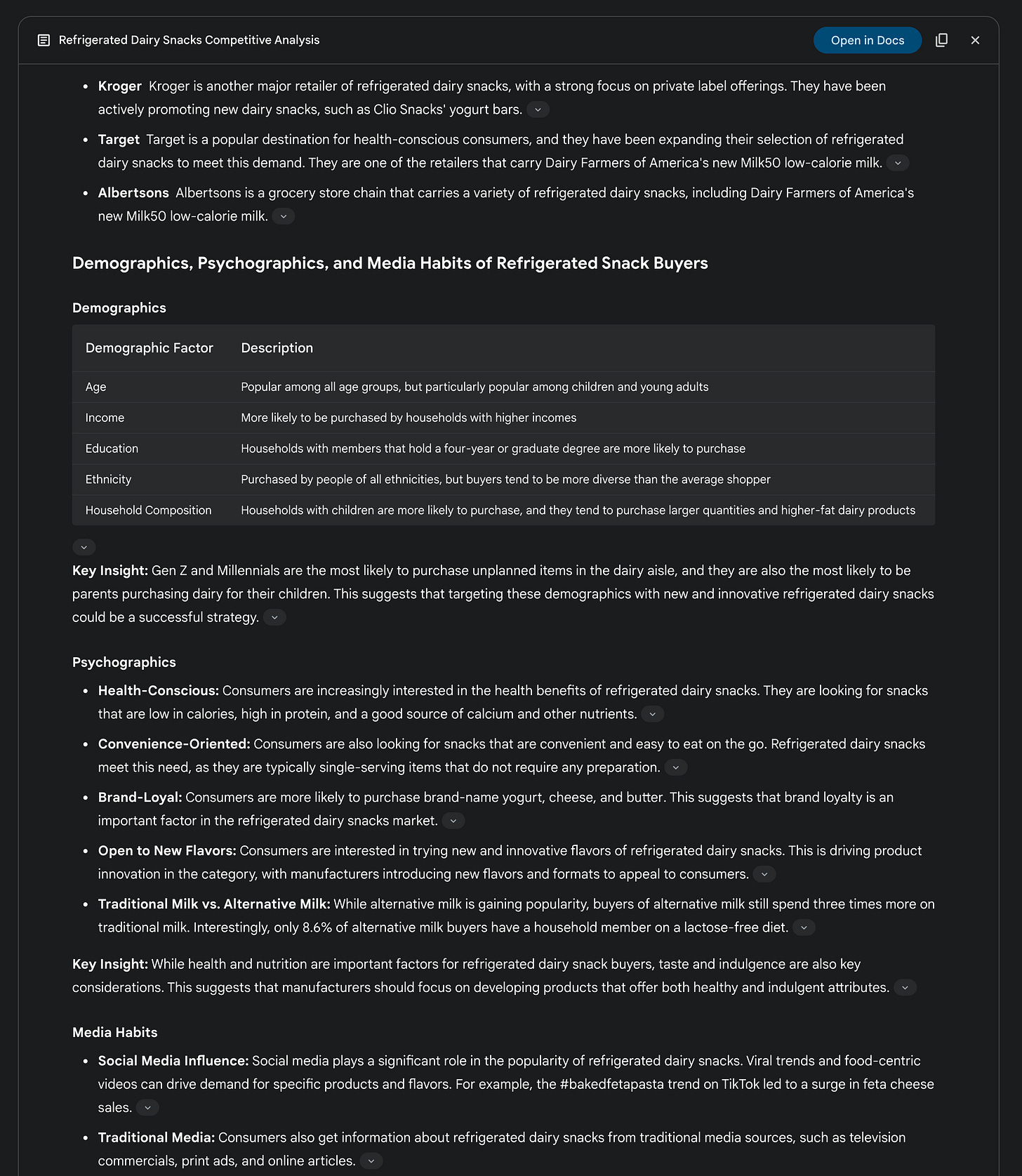177: Mixed Bag
Deep Research is definitely worth $20/mo; But so is Gemini Advanced; McKinsey points out the unrealized value of AI creativity
That was quick.
Last week I wrote about spending $200/month for access to OpenAI’s “deep research” functionality inside its Pro plan. This week deep research is available for $20/month.
This is what happens in tech, and will continue to happen. AI moves fast. Creative people need to move fast, too. Remember when Adobe’s software cost thousands per seat? Now you subscribe as you need it.
If you’ve been on the fence about spending $20/month for ChatGPT Plus—and you find yourself using tools like Gemini, Claude, Perplexity often, then I’d wager getting access to ChatGPT deep research makes it worthwhile. It helps if you have some use cases in mind, so you can benefit from the research functionality. And if you do take my advice, I’d love to learn about your experiences.
I have no idea what “extended access” to deep research means inside the $200/mo Pro plan or what value it conveys. As I wrote last week, I’m not particularly sure what “more compute for the best answers” means for the kind of work I do across brand and marketing strategy, or creative development. I’m not going to continue that level investment. But I do think investing $20/mo in my own education is absolutely worth it.
And if you don’t feel like giving OpenAI a monthly Jackson, consider Google Gemini Advanced. Their feature set is almost identical to ChatGPT Plus.
I used the same dairy snacks prompt from last week’s $200 test to see how Gemini’s “deep research” compared. Where ChatGPT rendered 11,267 words (from 36 sources) in about 10 minutes, Gemini delivered 2,738 words (from 78 sources) in roughly five.
And you can pull the results right into a Google Doc.
I’ll repeat. If you’re new to a topic or industry, or initiating a new project, or strapped for time, or all of the above—tools like Gemini Advanced or ChatGPT Plus can prove invaluable. Are they perfect? Of course not. Do they make mistakes? Yes. And so do humans. But a human can’t search and synthesize 2,700 words in less than five minutes with 78 links to follow up on if needed.
The advantage is no longer your ability to merely research. It’s shifted. Your advantage is using your creativity to frame a point of view, then use AI to research and interrogate that perspective, and your brain and AI to review, edit and curate something valuable, in less time.
(Lack of) Investment in AI training is a consistent theme
The truth is, you have to use AI tools to understand them. None of them come with owners manuals—but let’s be honest, did you read the Adobe Photoshop manual first? And remember, yesterday’s tools couldn’t teach you how to use them as you’re using them; but ask an LLM, “How can I use you more effectively?” and it will teach you in context. Wharton’s Ethan Mollick has suggested there’s a ten-hour learning curve to grasp the full benefit of AI; your results may vary.
But don’t take my word for it. Here’s McKinsey with a lengthy report on what it calls Superagency and the challenge to unlock AI’s potential inside corporations. If you’re looking for someone to train you, you’re not alone.
As their report illuminates,
“The functional areas where AI presents the greatest economic potential are also those where employee outlook is lukewarm. Employees in sales and marketing, software engineering, customer service, and R&D contribute roughly three-quarters of AI’s total economic potential, but the self-reported optimism of employees in these functions is middling.”
I remain bullish on the opportunity for idea people to unearth and demonstrate remarkable value through the use of AI. Too many look at AI the same way they look at word processing or search—and gain no advantage. If you’re the kind of person who pursues the potential of the hole versus the utility of the nail or hammer, it’s time to seek out AI training.
In his weekly newsletter column, the analyst Benedict Evans wrote about the impact of LLMs on SEO and three decades of content creation based on links. Then he made a critical observation about the role of creative disruption in the age of AI.
“If the generic and obvious has less value, what does that mean for the unusual and different? The creative challenge for systems based on aggregating data from human activity (and of course LLMs are also mechanical Turks) is that creativity is variance and variance looks like an error, so theoretically, the more that you know what’s different but good, the better you’ll be.”
In other words, the majority of AI-derived content aims for a mediocre middle because that’s all it knows how to do.
The onus is on creative people to use AI to take us to places we can’t yet imagine, and solve problems in ways we haven’t seen before.








